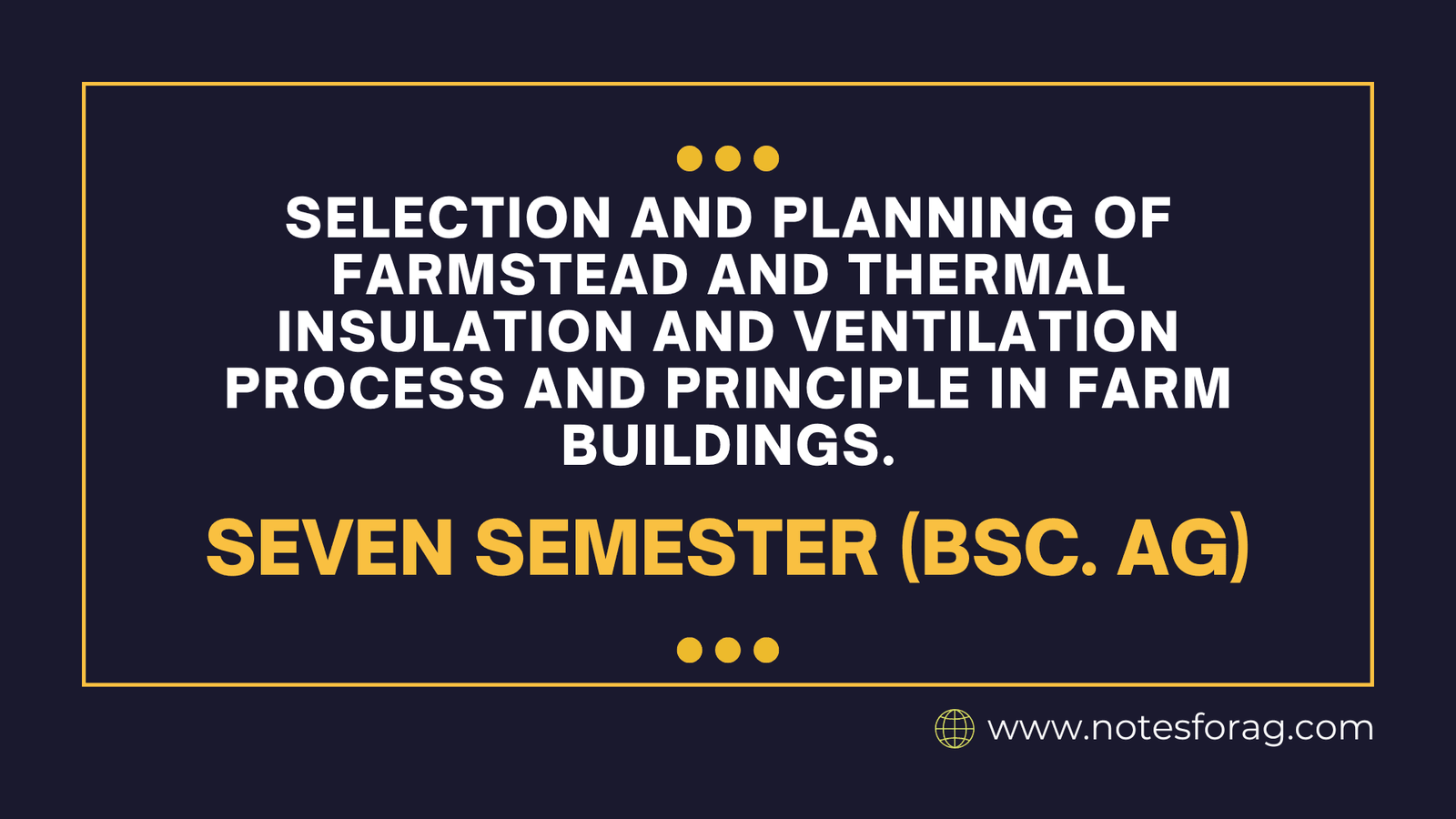Define Farmstead ?

A farmstead is the central area of a farm where buildings and structures are located. It typically includes barns, silos, and storage facilities, serving as the hub for agricultural activities. The layout is designed to make it easy to manage crops and livestock.
Table of Contents
Selection and Planning of Farmstead
When planning a farmstead, which is how farm buildings are arranged, several important factors need to be considered for efficiency and effectiveness.
1. Location and Layout
The farmstead should be located centrally to easily access fields and livestock. Key points include:
Proximity: Buildings should be close for easy access, but spaced out enough for ventilation and to prevent disease.
Access Roads: Good roads are necessary for moving equipment and products.
Utilities: Consider the availability of water, electricity, and drainage.
2. Building Types and Functions
Different buildings serve different purposes, including:
Barns: For housing animals and storing feed.
Silos: For storing grains and crops.
Workshops: For equipment repairs.
Storage Facilities: For tools and machinery.
Each building should be positioned based on its function and relationship to others on the farm.
3. Future Expansion
Plan for future growth by leaving space for additional buildings or expanding existing ones, allowing flexibility as the farm develops.
Thermal Insulation in Farm Buildings
Thermal insulation is important in farm buildings to keep temperatures stable and protect against extreme weather. Proper insulation helps maintain comfort for animals and stored products, while also reducing energy costs.
Importance of Insulation
Animal Welfare: Keeps livestock comfortable, reducing stress and improving productivity.
Energy Efficiency: Reduces the need for heating and cooling, lowering energy bills.
Product Protection: Helps protect perishable goods from temperature changes.
Common Insulation Materials
Various materials can be used for insulation, including:
Fiberglass: A common choice that works well in walls and ceilings.
Spray Foam: Fills gaps and offers excellent insulation.
Polystyrene Panels: Effective for walls and roofs.
Natural Materials: Options like straw bales are eco-friendly.
Installation Considerations
Continuous Coverage: Insulation should be installed without gaps.
Vapor Barriers: Help prevent moisture buildup that can damage insulation.
Ventilation: Adequate airflow is needed alongside insulation.
Ventilation Process and Principles in Farm Buildings
Good ventilation is crucial in farm buildings for animal health and product preservation. It helps remove heat, moisture, and odors while bringing in fresh air.
Why Ventilation is Important?
Animal Health: Prevents respiratory issues by lowering humidity and ammonia levels.
Product Quality: Maintains the freshness of grains and produce.
Temperature Control: Keeps temperatures comfortable, especially in hot weather.
Types of Ventilation
There are two main types of ventilation: natural and mechanical.
Natural Ventilation: Uses windows, doors, and vents to allow air to flow naturally. It’s cost-effective and works well in many climates.
Design Features: High and low openings let cool air in and hot air out.
Mechanical Ventilation: Uses fans to move air in and out, often needed in larger buildings.
Controlled Systems: Can be automated to adjust airflow based on temperature and humidity.
Ventilation Design Principles
Air Exchange Rates: Calculate the amount of fresh air needed based on the number of animals.
Placement of Vents: Vents should be positioned to promote effective airflow, with inlets low and outlets high.
Monitoring: Use sensors to check temperature and humidity, adjusting ventilation as needed.
Conclusion
Planning a farmstead involves careful thought about location, building types, and future growth. Proper insulation keeps the environment comfortable, while good ventilation ensures the health of animals and the quality of products. By considering these elements, farmers can create efficient and effective farm buildings that support their operations for the long term.
Frequently Asked Questions (FAQ)
What is a farmstead?
A farmstead is the central area of a farm where various buildings, like barns and storage facilities, are located. It serves as the hub for agricultural activities and is designed for efficient management of crops and livestock.
Why is location important in planning a farmstead?
The location should be central to fields and livestock to allow easy access. It should also have good access roads and nearby utilities like water and electricity for convenience
What materials are used for thermal insulation?
Common insulation materials include fiberglass, spray foam, polystyrene panels, and eco-friendly options like straw bales or cellulose.
Related Articles

